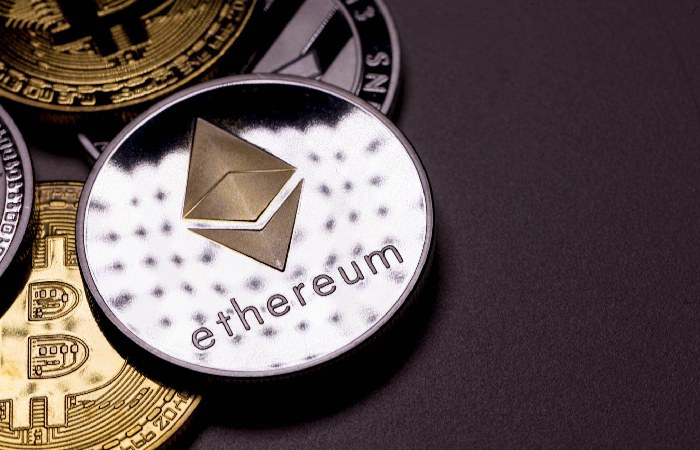Table of Contents
What is a Blockchain?
A blockchain is known as a distributed database or ledger of today’s top tech trends. The power to update a blockchain is distributed between the nodes, or participants, of a public or private computer network. It is known as distributed ledger technology or DLT.
Blockchain Has The Most Developers, And Why Is It Important?
The significance of block chains Let’s say you wish to make a long-term investment in cryptocurrency. How can you determine which blockchain has the biggest room for expansion?
The Total Locked Value (TVL) statistic, which measures the amount of money locked in a project’s smart contracts, is a tool that cryptocurrency researchers frequently utilize. Even with its extensive use, TVL has flaws. TVL is increasingly becoming an inaccurate measure of a channel’s long-term performance, given how initiatives come and go in DeFi.
TVL becomes even more misleading when the use of liquidity withdrawal incentives is prevalent in all projects, and leading to the phenomenon of “mercenary liquidity”, because where capital flight occurs once the incentives expire (read more about TVL issues, see here).
Why Is The Number Of Developers Significant?
A lesser-known metric used to measure project strength has looked at the number of developers flocking to the project.
While TVL indicates how many users are investing in the blockchain project, and a look at the developer contributions tells us a lot about the builders and thought leaders of the project. In short, TVL tells us about demand, while the number of developers tells us about supply.
Blockchain
If Blockchain A had 10,000 more active developers than Blockchain B in 2021, so you could be sure that. Blockchain has incredible things to come, even if its token price is currently low. Due to the open-source nature of blockchains, code contributions and developer activity are publicly available. So we don’t have to clean up a thousand GitHub pages ourselves.
A recent report by Electric Capital analyzed up to 500,000 unique code repositories (without copying and pasting code), and 160 million code commits on Web3 to examine which blockchain had the most active developer commits.
Introduction To The Layer 1 Blockchain
The fierce competition between Layer 1 platforms means that blockchain companies must compete for users and developers.
Separate developers into two groups: protocol developers who work on the core protocol and community developers who work on decentralized applications (dapps).
Ethereum
Not unexpectedly, with 2,980 developers in 2020 and 3,920 in 2021, Ethereum leads the race in terms of overall developers. Additionally, the largest proportion of Web3 engineers are drawn to Ethereum.
Ethereum was followed by cross-chain Polkadot Layer-1 (sometimes referred to as Layer-0) with a total of 840 developers in 2020 and 1,400 in 2021, then Cosmos, Solana and Bitcoin.
Polkadot
Polkadot’s leadership is in large part due to its use of Substrate (based on the Rust programming language), which gives developers the speed advantage to quickly create a custom blockchain for their specific use case without having to set up your network of validators. Updating channels in Polkadot is also much faster due to backwards compatibility that doesn’t require developers to fork.
Now that we’ve compared the absolute sizes let’s talk about the fastest growing chain. Near saw a 4x increase, a sign of good things for both chains. Among the medium-sized ecosystems with 300-1000 developers, Solana’s most extensive developer growth with a significant 5x change.
Polygon
Next is Polygon with 2x growth, albeit a sidechain scaling solution after Polygon comes Cardano (90%), Binance Smart Chain (80%), Cosmos (70%) and Bitcoin (10%). Despite the market cap explosion in 2021, Binance Smart Chain saw slightly slower developer growth.
However, Bitcoin’s weaker growth is not surprising given its lack of innovative contract capabilities and its longstanding presence. Confirm these findings in a recent Messari research paper, which finds the most robust growth in the same ecosystems.
Category
What about the smaller channels in the Developer 51-300 category? Terra takes the lead with 4x developer growth, followed by Internet Computer, Fantom, Harmony, Avalanche, Algorand, Chainlink, Hedera, and Moonriver in their respective order.
The exponential growth of Terra’s market cap and TVL in 2021, despite the decline in the number of developers, suggests that Terra is doing “more with less”. The number of incoming Terra developed is expected to continue increasing in 2023.
Developer Blockchains
If we merge small and medium-sized developer blockchains, Terra has the highest growth in full-time developers, while Fantom has the highest increase in part-time developers. This comparison may not be ideal, as smaller emerging chains will experience a higher growth rate until the fading effects kick in.
Interestingly, despite Ethereum’s dominant presence in the layer one smart contract wars, competing chains have managed to sustain their successes by introducing EVM support and allowing Ethereum app developers to port their projects efficiently.
It suggests chains without EVM support (like Singapore-based Zilliqa) could be a setback.
Introduction to Web3
How is Web3 in general? 2021 saw the highest increment of new developers at 34,391. Setting an all-time high—at least an all-time high of 18,416 lively monthly developers pledging to code for open source Web3 projects.
The increase in the number of active developers correlates with increased network prices. Correlation is not causation. It may mean that growth in the number of developers will lead to higher network value in the future. Still, it may also indicate that a valuable network will attract developers later.
Finally
Many of these numbers underestimate actual developer activity since they only include open source projects.
In short, Ethereum, Polkadot, Cosmos, and Solana are emerging as the platforms with the most prominent developers. Doding well for the future of their DeFi ecosystems in 2023.
Although the proportion of developers in Web3 is still tiny compared to the total number of developers in the market. The growth of Web3 as a whole is now hard to deny.


![Blockchain: Developers ,Importance And More [2024]](https://www.treasurebiz.com/wp-content/uploads/2022/05/Blockchain.webp)
Review Blockchain: Developers ,Importance And More [2024].